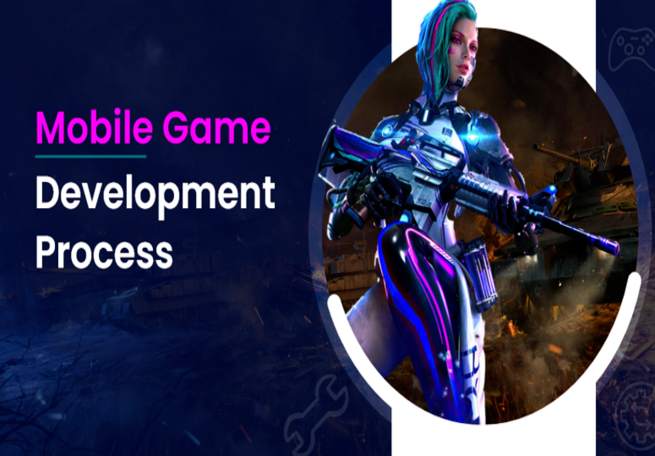Simple Steps of Mobile Game Development Process

Mobile games are one of the fastest-growing markets in the gaming industry. In 2020, mobile games generated $77.2 billion in revenue, which is a 9.3% increase from 2019. The mobile gaming market is expected to reach $196 billion by 2022 by adapting advanced mobile game development processes.
There are several reasons for this growth. First, the number of mobile phone users is increasing worldwide. According to Statista, there were 7.03 billion mobile phone users in 2019, and this number is expected to increase to 7.33 billion in 2020.3 This means that there are more people who can potentially play mobile games and there is rising demand for mobile game developers in the mobile gaming market. Second, mobile games are becoming more sophisticated and appealing to gamers of all ages.
Types of Mobile Games
There are two types of mobile games- native and web-based.
1. Native Mobile Games
Native mobile games are installed on a mobile device and run through an application. They are written in the programming language of the specific mobile platform they are intended for- Objective C or Swift for iOS games, Java for Android games, etc. Native mobile games have access to all the features of the mobile device, such as GPS, push notifications, camera, and so on. They can also be integrated with other applications installed on the device, such as social media and payments apps.
2. Web-based Mobile Games
Web-based mobile games are played through a mobile web browser. They are written in HTML5, CSS3, and JavaScript, and use technologies like WebGL.
8 Best Mobile Game Development Process
The mobile game development process can seem daunting, but it doesn’t have to be. With a little planning and some basic knowledge, you can develop a great mobile game. Here are a few simple 8 stages of mobile game development to get you started:
1. Choose your game platform
There are many different platforms for mobile games, so it’s important to choose the one that’s right for you to start with the right mobile game development phase. Some popular options include iOS, Android, and Windows Phone.
2. Choose your game type
There are many different genres of mobile games, so it’s important to decide what type of game you want to make. Some popular genres include puzzle games, racing games, and strategy games.
choose your game idea. Once you’ve chosen your platform and game type, it’s time to come up with a great game idea. If you’re having trouble coming up with an idea, try thinking about games that you enjoy playing. What makes them fun? What could you do to make them even better?
3. Find your target market
Once you know what kind of game you want to make, you need to find your target market. Who is going to be playing your game? What kind of mobile devices do they use?
4. Plan your game
Now that you know what you want to make and who you want to make it for, it’s time to start planning your game. What are the goals of your game? Also, What are the levels? What are the features?
5. Design your game concept
This is where the fun begins! Once you have a plan for your game, it’s time to start designing it. This is where you’ll create the look and feel of your game, as well as the gameplay mechanics.
6. Develop your game
Now that you have a design for your game, it’s time to start developing it. This is the most important part of the mobile game development process, as it’s where you’ll actually create the game.
7. Test your game
Once you’ve developed your game, it’s important to test it to make sure everything is working properly. This is where you’ll catch any bugs or glitches and fix them before release.
8. Release your game
Congratulations! You’ve now developed a mobile game. Now it’s time to release it to the world and watch as people start playing and enjoying your creation.
How to Monetization Strategy for Your Newly Launched Mobile Game?
There are a few ways to monetize mobile games after completing stages of mobile game development. The most common method is through in-app purchases, where players can buy virtual goods and items within the game. Other methods include advertising, subscriptions, and paid downloads.
1. In-app purchases
In-app purchases are the most common way to monetize mobile games. Players can buy virtual goods and items within the game, such as power-ups, extra lives, and new levels.
2. Advertising
Advertising is another popular way to monetize mobile games. Games can display banner ads or video ads that players have to watch before they can continue playing.
3. Subscriptions
Subscriptions are a less common but still effective way to monetize mobile games. Players can pay a monthly or yearly fee to access premium content, such as new levels, items, and power-ups.
4. Paid downloads
Paid downloads are the least common but still viable way to monetize mobile games. Players can pay a one-time fee to download and play the game.
There are many different ways to monetize mobile games, so it’s important to choose the one that’s right for your game and your players. Experiment with different methods and see what works best for you.
Conclusion
Mobile game development process is not as difficult as it may seem at first. By choosing the right game development companies and following the simple steps outlined in this article, you can develop a great mobile game that people will love to play. The gaming market is rapidly growing with NFT, Metaverse, Blockchain and expected to grow by more than $147 billion by 2026. So what are you waiting for? Select the best NFT game development company to move ahead in the gaming industry with the trends and see your game come to life!

